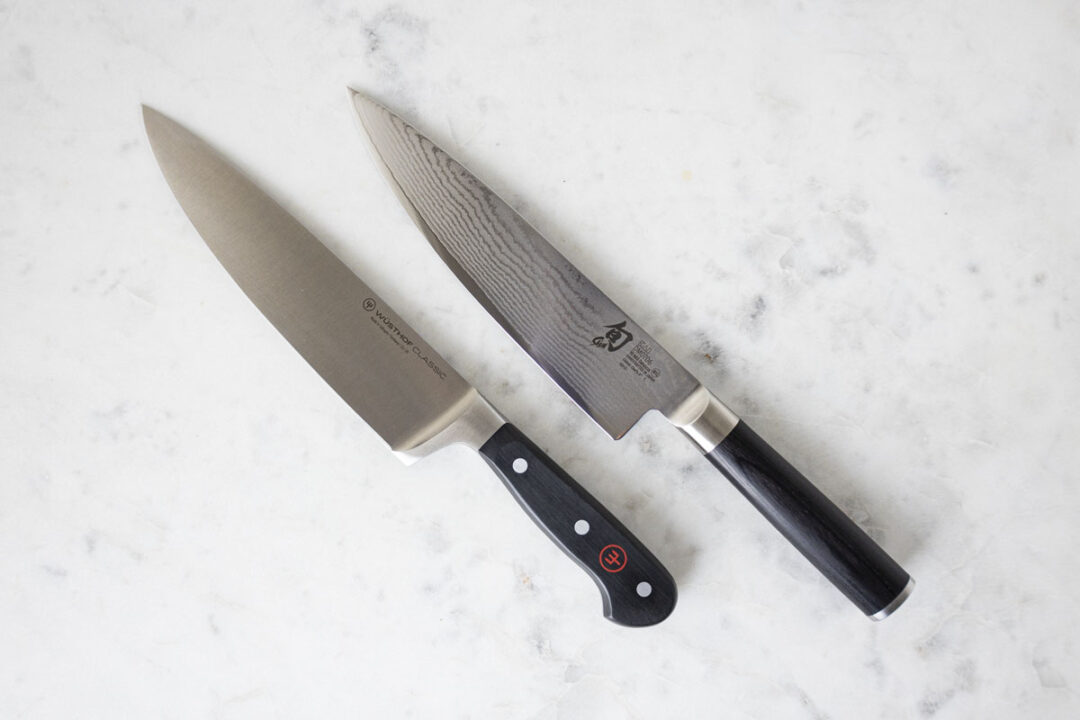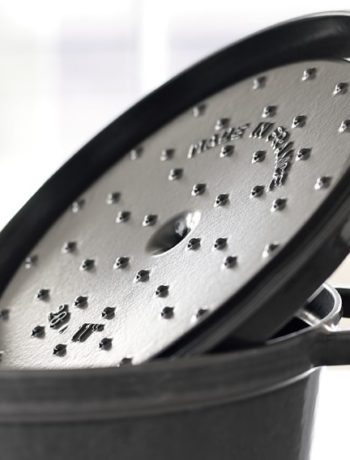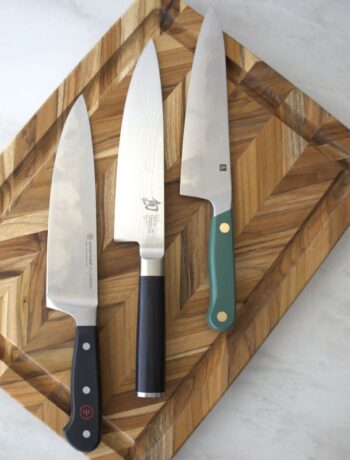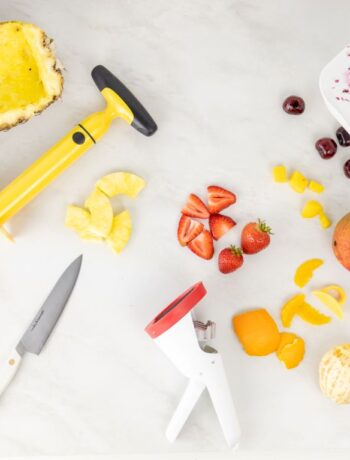Do you know the parts of your knife? Why should you care? Knowing the anatomy of your chef’s knife will help you use it effectively, improve your technique, and extend the life of your knife. Plus, it’s interesting and getting to know the parts—from the blade’s edge to the handle’s tang—can make you feel more confident about handling a knife and determining the quality.
You probably already understand kitchen knives are made up of two main parts: the blade and the handle. But each of those is subsequently made up of different parts. And did you know, most of those parts can come in handy for different tasks. Understanding all of this is the first step in cooking like a professional chef. So here is a quick guide to help you get to know all the parts of your favorite chef’s knife.
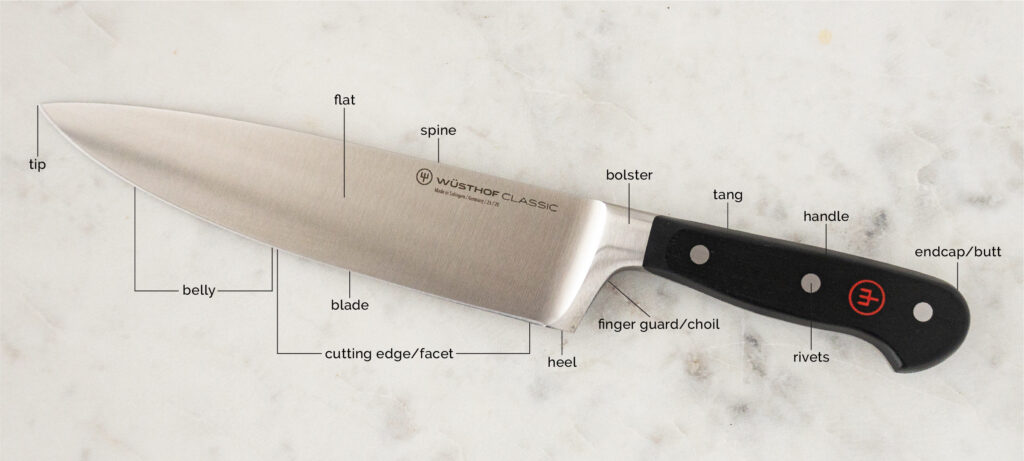
The Blade
The blade is the main body of the knife. And the size, shape, and material of the blade make up the most defining characteristics of a Chef’s knife. The blade is the part of the knife where all of the magic happens.
The Spine
This is the top, non-cutting edge of the blade. It is usually thicker and sturdier than the cutting edge, providing structural integrity. Although the spine might seem like the perfect place to rest a finger for more stability and force, this isn’t something encouraged. The only time you might use it is when finely chopping and/or mincing ingredients like garlic and herbs. But you can use the spine for prying open things like shellfish and nuts.
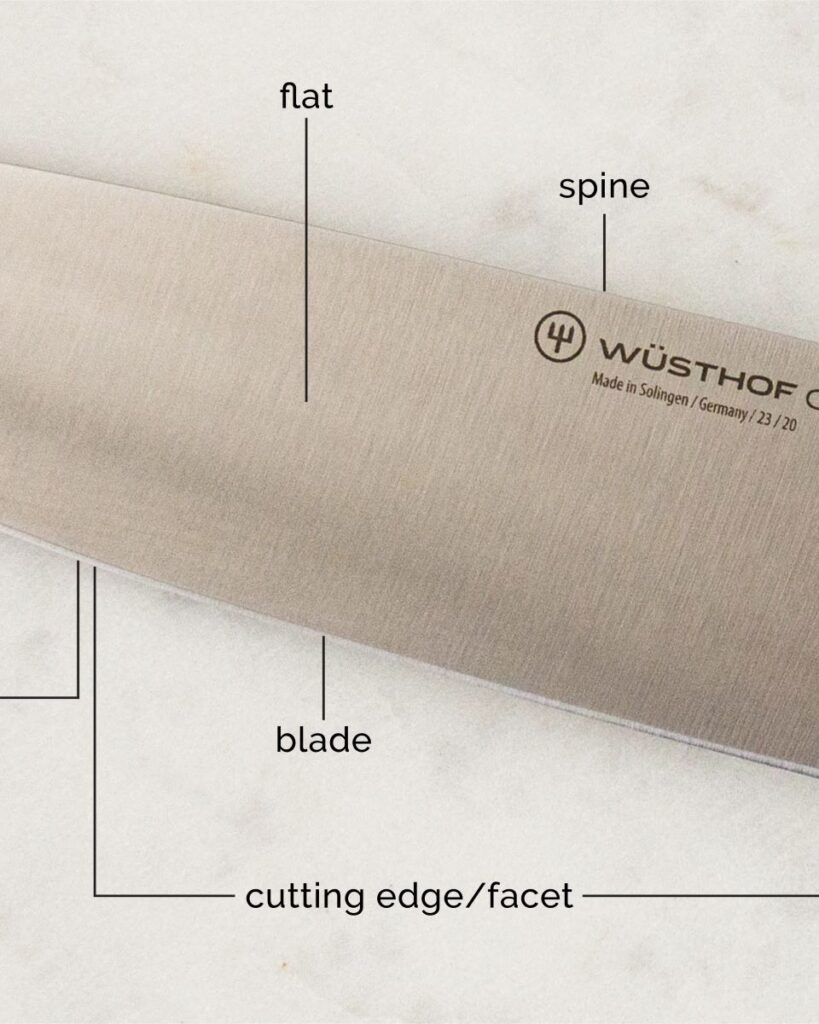
The Bolster
Not all knives have a bolster. But it’s the thick collar that meets between the blade and the handle. The width of the bolster shows the thickness of the original chunk of steel. It helps add balance, control, and strength. It also helps keep your hand safe by preventing it from sliding on to the blade.
The Flat
As the name suggests, the flat is the flat part on both sides of the blade. You use the flat near the heel for your pinch grip. You can also use the flat of a chef’s knife for crushing ingredients like garlic and cucumber. Chefs will also use the flat of the blade for transferring fresh ingredients from the cutting board to the pan or bowl.
The Cutting Edge or Facet
This is the sharpened portion of the blade, from tip to heel. This is the part you cut, chop, slice, and dice with.
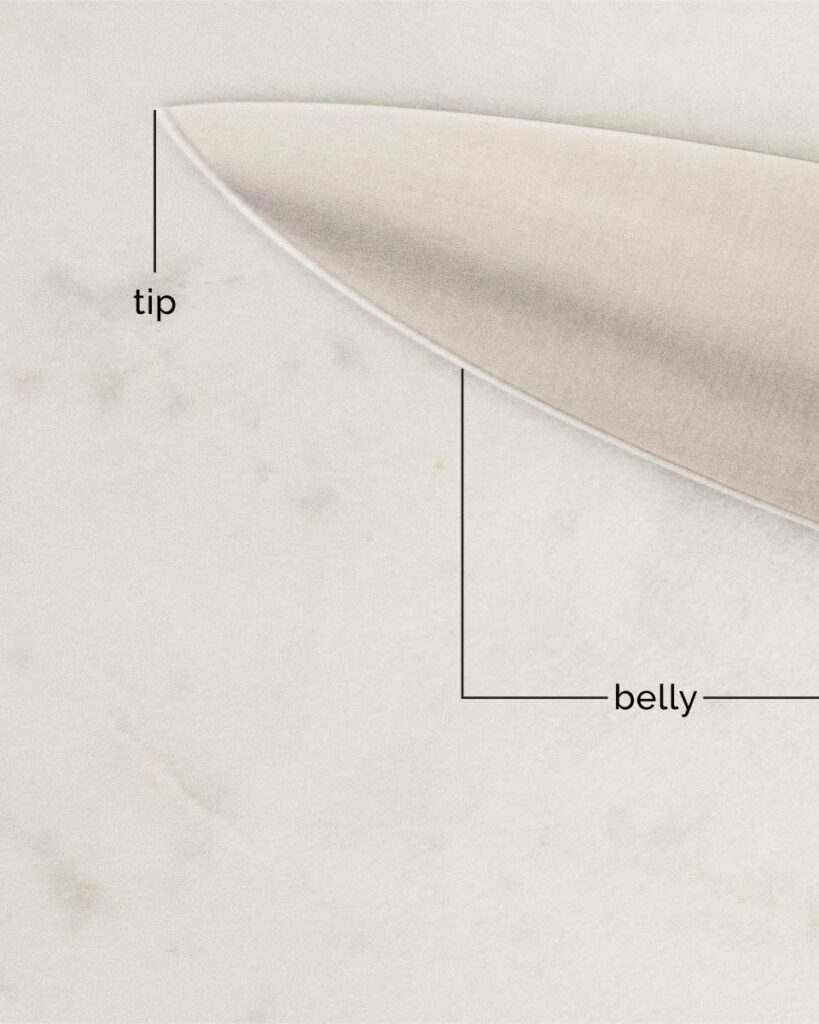
The Tip
The sharp tip of the chef’s knife is the pointed front end. It allows for precise, detailed cutting and is perfect for those more delicate tasks such as filleting fish or coring fruits. It can also be used to make guide cuts for things like watermelon, squash, and other dense fruits and vegetables.
The Heel
This is the rear part of the blade, located closest to the handle. It is the widest part of the knife and the section of the cutting edge most often used for chopping hard things like nuts and carrots.
The Finger Guard or Choil
This is the area of the blade where the tang leaves the handle and curves toward the cutting edge of the knife blade. Typically, you will pinch just in front of the choil with your forefinger and thumb and then wrap your fingers gently behind the choil around the handle for a comfortable pinch grip.
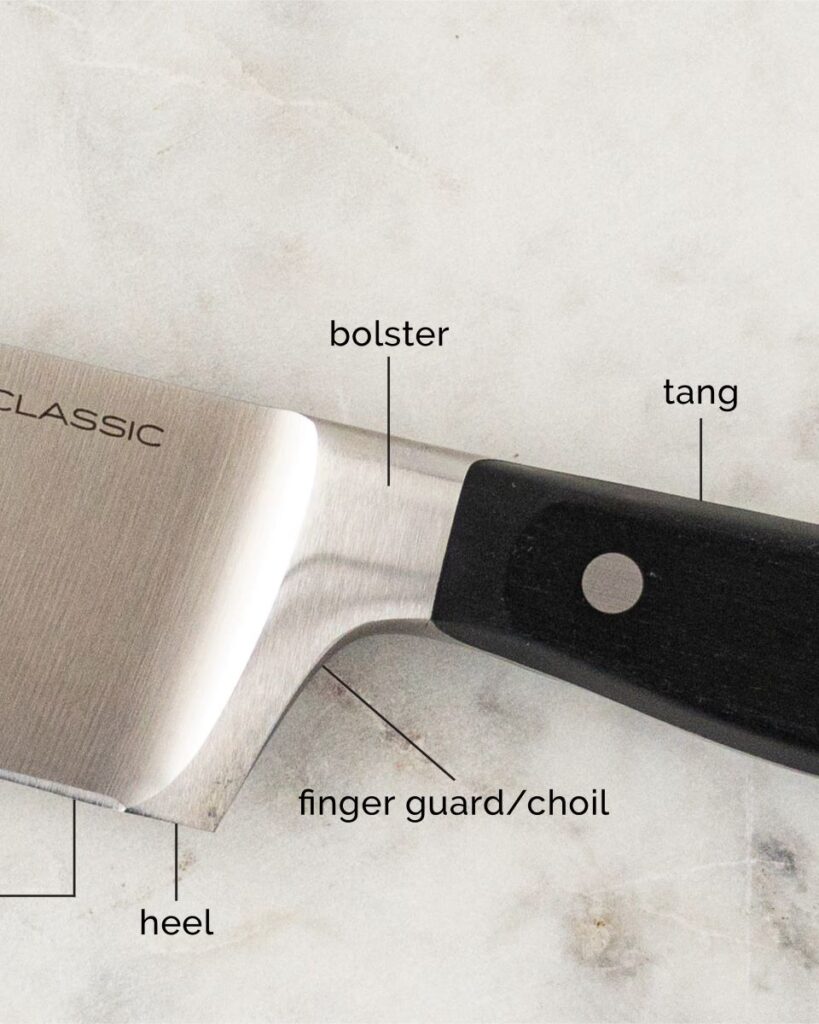
The Handle
This is the part of the knife you will have the most contact with, unless you are very unlucky. Traditionally, handles were made of wood. But modern handles are usually made of plastic, rubber, or composites. The handle of a Chef’s knife should fit in your hand and feel comfortable.
The Tang
This is the area of the blade that actually sits inside the handle. Higher quality knives will usually have a full tang, meaning the steel inside runs the full length of the handle. In some knives the tang is visible, other times it is completely hidden.
The Rivets
Rivets are the cylindrical studs that keep the tang securely attached to the handle. You want to always check to make sure the rivets are flush with the handle and don’t protrude at all.
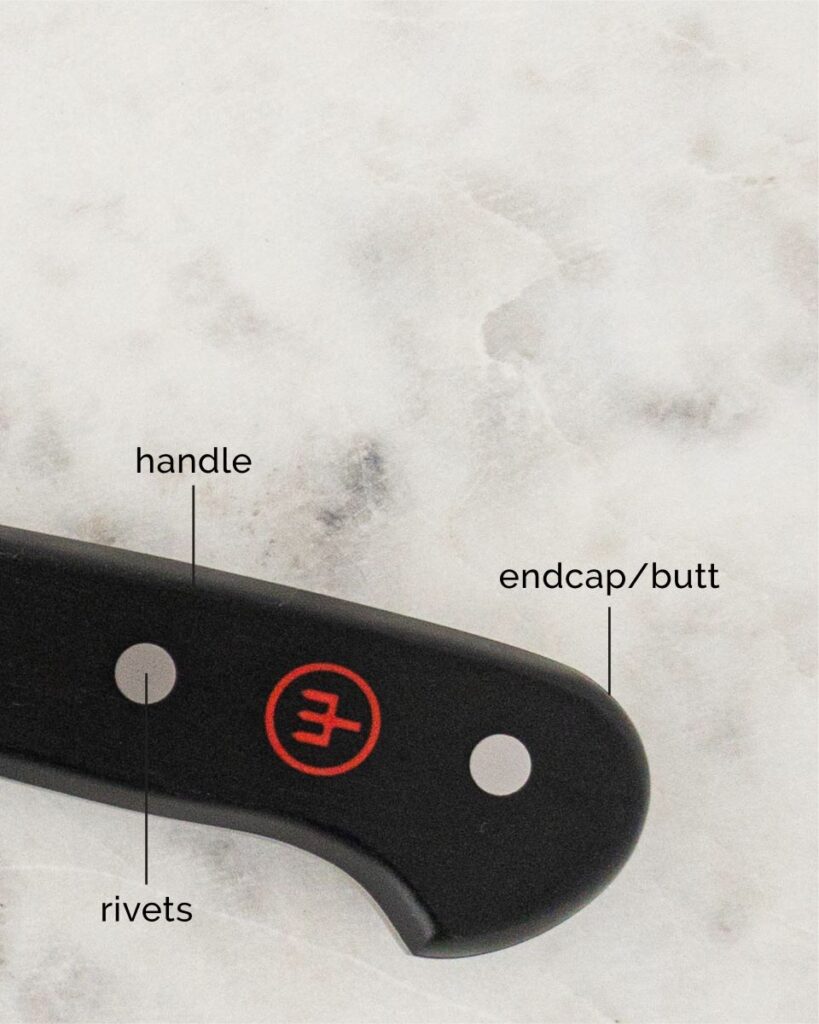
The Endcap/Butt
This is the end of the handle, farthest from the tip. Some knives will have a type of endcap or a finger guard at the butt of the handle to give their knives a little more structure and the handles a little more weight for balance. You can use the butt of the knife for crushing up soft nuts, cookies, or crackers.
Mastering the anatomy of a chef’s knife is an essential step toward becoming more efficient and confident in the kitchen. Different brands and styles will have slightly different structures, but for the most part, these basic parts and structures are common to most kitchen knives. And by understanding the purpose of each part, from the spine to the butt of the handle, you’ll be able to use your knife more effectively, enhance your cutting techniques, and even extend the lifespan of your tool. With this knowledge and a few more tips, you’ll be well on your way to using your chef’s knife like a professional.

